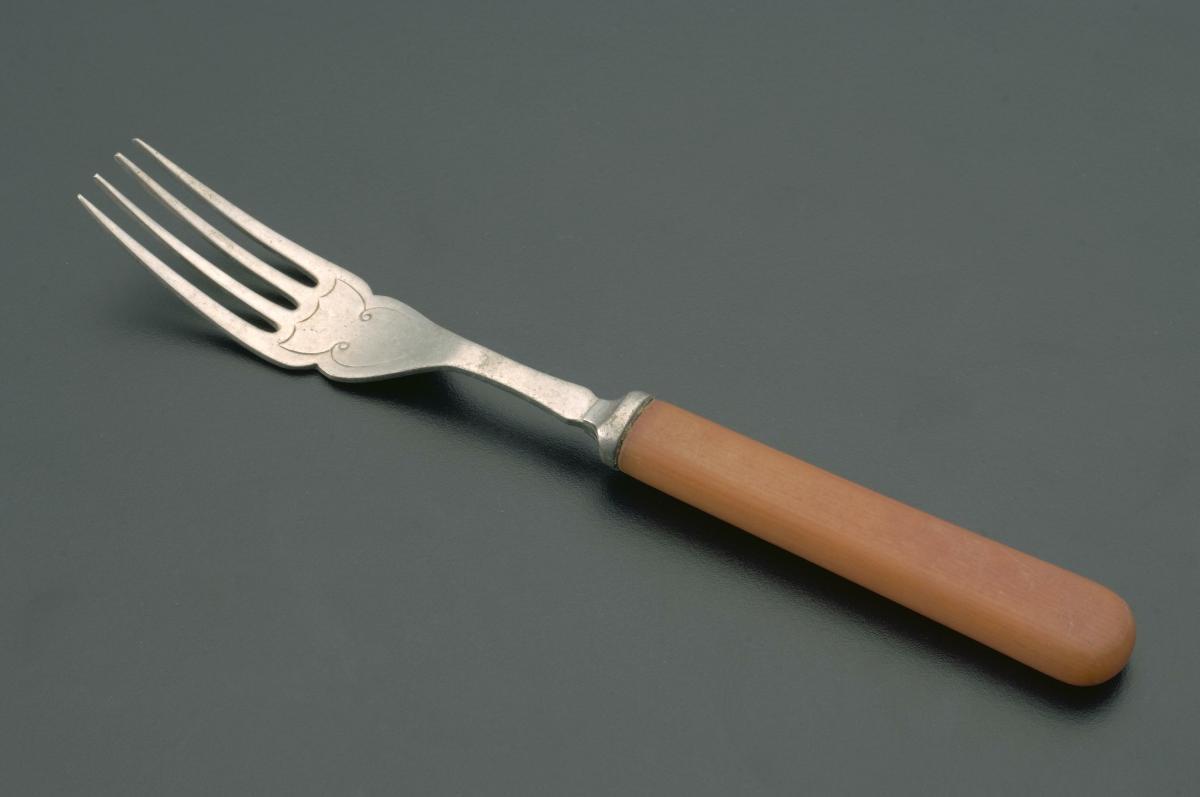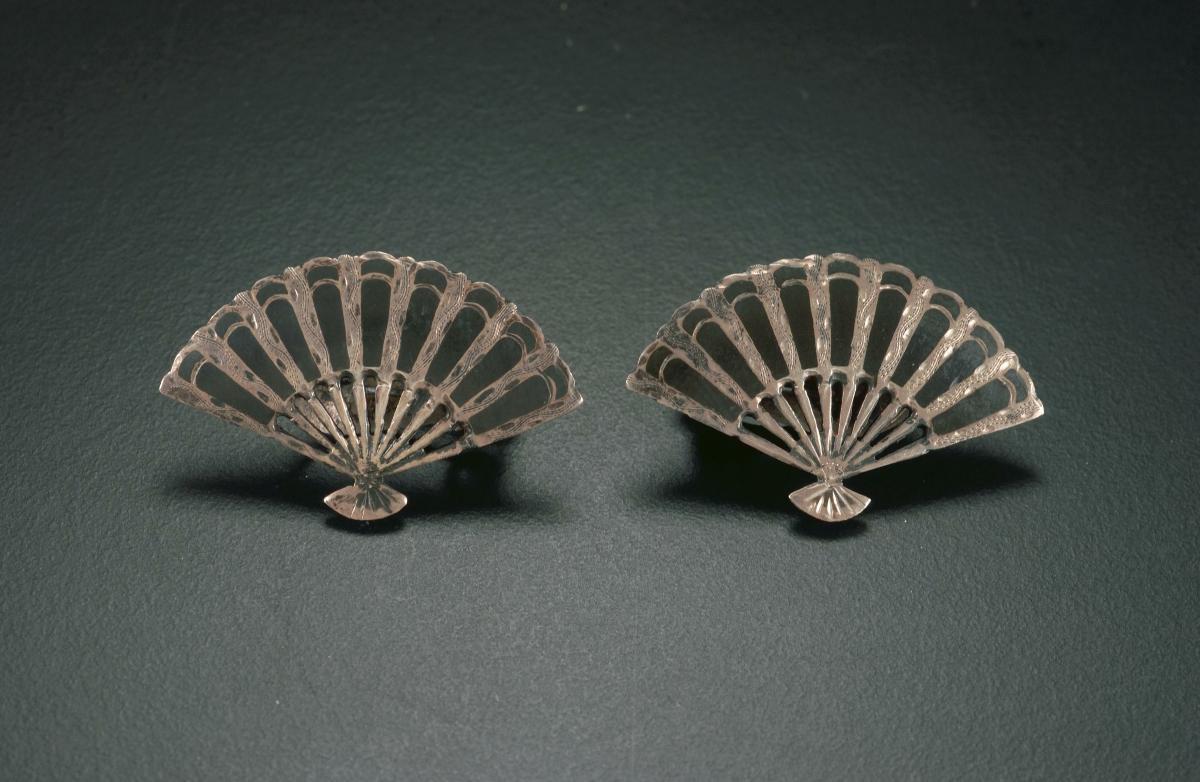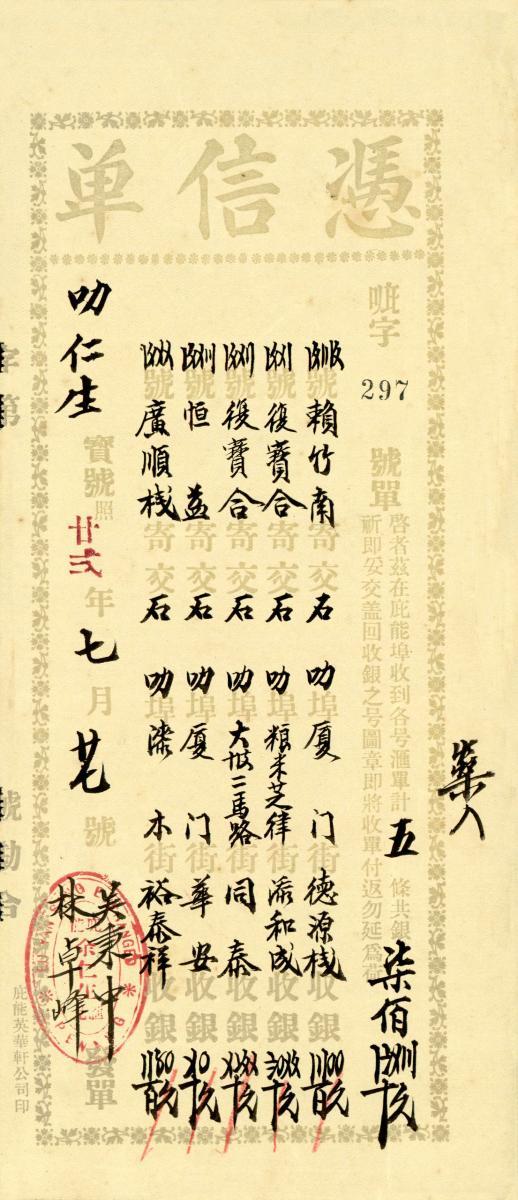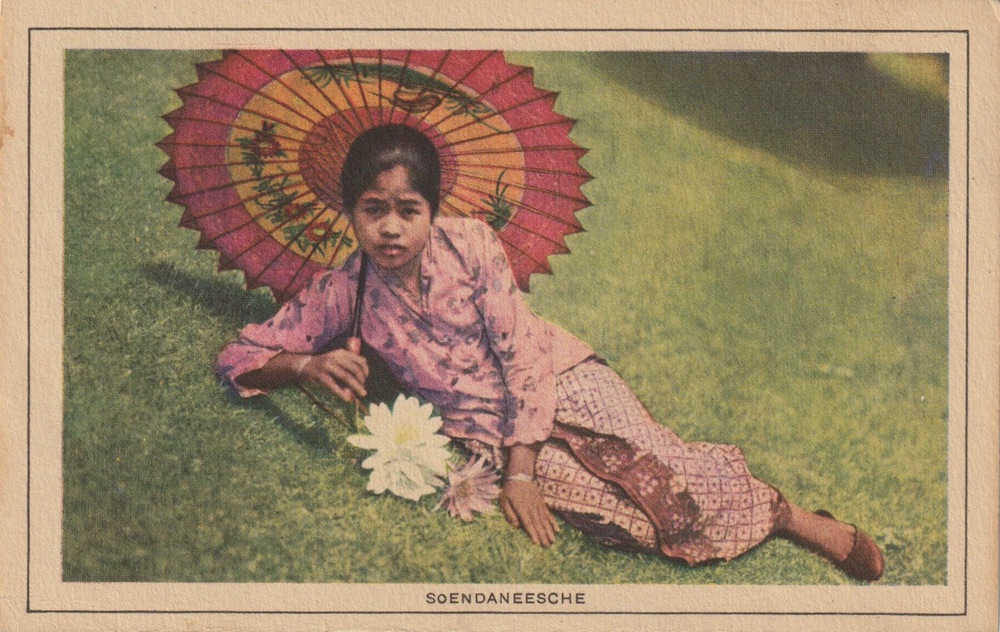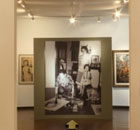This infant's silver modesty plate, also known as caping, is shaped like a heart. It is decorated with a smaller heart with a foliage design. The outer circle consist of four-petalled flowers. Caping plates has been used as a substitute for loin cloth and were usually worn by little children. These modesty discs are usually shaped in the form of a fig leaf, and since the 20th century have become elaborately embossed. Caping is thought to be introduced into the Malay Peninsula by Indians during the Srivijaya period from around the 7th to the 13th centuries. Initially, they were mostly worn by little girls in the North and East coast regions of the Peninsula. They were made of different materials depending on the social status of the family. Gold was used for royalty, silver for dignitaries while brass or copper was used for the lesser affluent. Babies wore capings as soon as they were able to stand, usually around the age of one. A simple ceremony was performed, where prayers and food offerings were made for the child.





